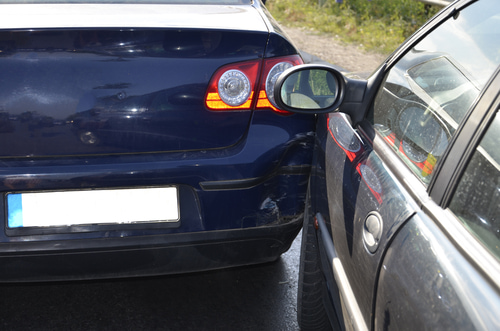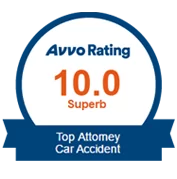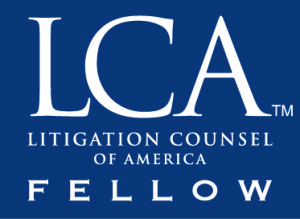
What Is Considered Road Rage?
Road rage refers to aggressive or violent behavior exhibited by a driver in response to perceived provocation or frustration on the road. These actions often go beyond mere traffic violations, including deliberate threats, tailgating, sudden braking, intentional collisions, or physical altercations.
While some forms of aggressive driving are treated as infractions, road rage typically involves conduct that rises to the level of recklessness or intentional harm. This distinction can affect how an incident is treated under the law and whether a victim may pursue criminal charges, civil compensation, or both.
In New York and New Jersey, road rage incidents have resulted in serious injuries, fatalities, and civil and criminal lawsuits.
For drivers, passengers, or pedestrians injured during these events, the legal framework for holding the at-fault party accountable depends on the nature of the behavior, the resulting harm, and the applicable local laws.
This article by Maggiano, DiGirolamo & Lizzi, PC, explains what is considered road rage and when an injured party may have grounds to pursue a personal injury claim.
What is considered road rage?
- Road rage includes: aggressive driving like brake-checking, chasing, blocking cars, verbal threats, or physical confrontation.
- It’s not a standalone crime: Instead, it’s charged under laws like assault, reckless driving, or endangerment in NY and NJ.
- Victims can sue: If road rage causes injury or damage, you can file a civil lawsuit for compensation even if no criminal charge is filed.
- Legal consequences vary: Criminal penalties may include jail time, fines, and license suspension, while civil cases may result in damages.
- Evidence matters: Dashcam footage, police reports, and medical records can prove reckless or intentional conduct.
Legal Definitions of Road Rage in New York and New Jersey
Road rage is not a named offense in most state statutes, including New York and New Jersey. Instead, it is a behavioral term used to describe a series of actions that may violate one or more criminal laws. Prosecutors and civil courts evaluate these incidents based on the conduct involved and the consequences of that behavior.
What Counts as Road Rage Under State Law?
Examples of behavior commonly categorized as road rage include:
- Deliberately cutting off another driver
- Sudden braking to provoke a rear-end collision, often referred to as brake checking
- Chasing or attempting to block another vehicle
- Throwing objects at vehicles
- Verbal threats or obscene gestures
- Exiting a vehicle to confront another driver physically
In New York, these acts may lead to charges such as reckless endangerment (Penal Law § 120.20), assault (Penal Law § 120.00), or menacing (Penal Law § 120.14). These charges reflect conduct that places others at risk or involves physical aggression.
In New Jersey, similar behavior can result in charges under statutes such as assault by auto (N.J.S.A. 2C:12-1c), disorderly conduct (N.J.S.A. 2C:33-2), or even aggravated assault if serious bodily injury occurs.
The state’s use of “assault by auto” allows prosecutors to apply criminal liability when a driver uses a vehicle recklessly or with intent to cause harm.
Although road rage is not a distinct charge, these underlying offenses form the legal foundation for criminal prosecution and civil liability.
Is Road Rage a Crime?
Road rage can lead to both misdemeanor and felony charges, depending on the severity of the conduct and the harm caused. For example:
- New York: Reckless driving under Vehicle and Traffic Law § 1212 is a misdemeanor, but if the conduct escalates to assault, a defendant may face felony charges.
- New Jersey: A first offense of assault by auto resulting in bodily injury is a fourth-degree crime, but if serious bodily injury occurs, it can be charged as a third-degree offense or higher.
In both states, a driver involved in a road rage incident may be arrested, prosecuted, and, if convicted, sentenced to jail or prison. Sentencing may include license suspension, fines, probation, and mandatory anger management programs.
The state pursues criminal charges, but the same conduct may also expose the driver to a civil lawsuit by the injured party. The outcome of a criminal case does not determine civil liability, as different standards of proof apply.
What Are the Legal Consequences of a Road Rage Incident?
While criminal charges penalize unlawful conduct, victims may also pursue compensation through a personal injury lawsuit, which requires a separate legal process in civil court.
Criminal Penalties for Road Rage
The criminal consequences for road rage vary widely depending on the underlying offense. For example:
- In New York, reckless endangerment in the second degree (a Class A misdemeanor) carries up to one year in jail. If elevated to first degree (a Class D felony), the penalty increases significantly.
- In New Jersey, assault by auto causing serious bodily injury is typically a third-degree crime, punishable by three to five years in prison and fines up to $15,000.
In both states, additional penalties may include community service, vehicle impoundment, or court-ordered restitution to victims.
Convictions may also affect a defendant’s ability to obtain insurance coverage, employment, or professional licensure. These penalties aim to deter dangerous driving behavior and reinforce public safety.
Civil Liability After a Road Rage Incident
A person injured in a road rage event may seek damages through a civil lawsuit. This process does not require a criminal conviction. Instead, the plaintiff must show that the defendant acted recklessly or intentionally and that this conduct caused harm.
The civil lawsuit may allege negligence, assault, battery, or intentional infliction of emotional distress. Unlike criminal court, where guilt must be proven beyond a reasonable doubt, civil court only requires proof by a preponderance of the evidence, meaning the defendant is more likely than not responsible.
Compensatory damages in civil court may include:
- Medical expenses
- Lost income
- Pain and suffering
- Emotional distress
- Property damage
In some cases, the court may also award punitive damages to punish egregious conduct and deter similar actions by others.
How Road Rage Can Lead to Personal Injury Lawsuits
When road rage leads to a physical collision or direct injury, the incident shifts from a behavioral problem to a legal dispute. Injured individuals may have standing to file a personal injury lawsuit, even if the driver was not charged criminally.
Who Is Liable in a Road Rage Crash?
The aggressive driver is typically the primary party liable for harm caused by road rage. However, additional parties may be liable under certain circumstances:
- Employers. If the driver was operating a company vehicle while working, the employer may share responsibility under the doctrine of respondeat superior.
- Vehicle Owners. In New York, the registered owner of a vehicle may be held liable under vicarious liability if another person uses their vehicle and causes harm.
- Multiple Drivers. If more than one driver contributed to the incident, liability may be shared under comparative fault rules.
Legal claims may also extend to passengers who encouraged or participated in the aggressive behavior.
Common Injuries From Road Rage Accidents
Injuries sustained during road rage incidents often resemble those in high-impact vehicle collisions but may also include assault-related harm. Common injuries include:
- Whiplash and cervical strain
- Herniated discs or spinal trauma
- Concussions or traumatic brain injury
- Fractures, bruises, and lacerations
- Post-traumatic stress disorder or anxiety
Documenting these injuries through a timely medical evaluation is critical. Not only does this support treatment, but it also creates a record that may strengthen a legal claim for damages. Delays in seeking care may weaken the connection between the incident and the injury.
Suing for Road Rage in New York and New Jersey
When road rage results in injury, property damage, or emotional trauma, victims may file a personal injury claim seeking compensation. This legal action is separate from any criminal prosecution.
Filing a Civil Claim for Damages
To pursue a civil lawsuit, the plaintiff must demonstrate that the defendant’s behavior was intentional or reckless and directly caused injury or loss. Claims may be based on one or more legal theories:
- Negligence
- Reckless endangerment
- Assault or battery
- Intentional infliction of emotional distress
Available damages include economic losses (such as medical bills and missed work) and non-economic harm (such as pain and suffering). The court may consider punitive damages in cases where the defendant’s actions were especially outrageous.
Civil lawsuits are filed in the appropriate state court where the incident occurred or where the defendant resides. Discovery, depositions, and settlement negotiations may follow before trial.
Legal Timelines for Filing a Road Rage Injury Claim
Legal action after a road rage incident is subject to strict filing deadlines known as statutes of limitations. These timelines determine how long a person has to initiate a lawsuit. Missing the applicable deadline generally results in the loss of legal rights, regardless of the severity of the injuries or strength of the evidence.
Statute of Limitations in New York and New Jersey
In New York, the statute of limitations for personal injury claims related to motor vehicle incidents, including those caused by road rage, is three years from the incident date. This applies to bodily injury, property damage, and related economic losses. However, shorter deadlines may apply in specific scenarios:
- Claims against a public entity. If the road rage incident involved a municipal vehicle or a government employee, a Notice of Claim must be filed within 90 days.
- Intentional torts. In some cases involving assault or deliberate harm, a one-year deadline may apply.
In New Jersey, the statute of limitations for personal injury claims is two years from the date of the incident. For property damage, the filing window extends to six years. As in New York, claims against public entities require a Notice of Claim within 90 days under the New Jersey Tort Claims Act.
Filing is not just a procedural formality. It ensures access to evidence, strengthens witness reliability, and allows legal counsel to prepare a comprehensive case.
How to Prove Liability in a Road Rage Case
Establishing fault in a road rage incident requires credible evidence that the other driver acted aggressively or intentionally. Documentation becomes especially important because these cases often involve emotional conflict and subjective accounts.
Evidence Used in Road Rage Litigation
Evidence may include:
- Police reports. Officers often make on-scene assessments and may include citations or notes about aggressive behavior.
- Dashcam footage. Video recordings from the victim’s or another driver’s vehicle may capture erratic lane changes, braking, or threats.
- Surveillance video. Footage from businesses, traffic cameras, or residential areas can support claims of intentional conduct.
- Photographs. Images of vehicle damage, tire marks, and debris help reconstruct events.
- Witness statements. Neutral third parties can corroborate claims of road rage, especially when threats or verbal aggression were involved.
- Medical records. Injury documentation tied to the collision or assault helps quantify damages.
Courts assess both the objective evidence and the circumstances surrounding the conduct. If a driver acted with disregard for the safety of others or used the vehicle as a weapon, liability is more easily established.
Comparative Fault in Road Rage Claims
New York and New Jersey both apply comparative fault principles, which means compensation may be reduced if the injured party is found to be partially responsible for the incident.
In New Jersey, a modified comparative negligence rule applies. If a plaintiff is more than 50 percent at fault, they cannot recover damages. If the plaintiff is 50 percent or less at fault, their compensation is reduced proportionally.
In New York, the pure comparative negligence rule allows recovery regardless of the plaintiff’s level of fault. A plaintiff who is 70 percent responsible could still recover 30 percent of their total damages.
This legal doctrine makes clear documentation even more important. Defensive driving behavior, prompt reporting, and cooperative conduct post-incident all contribute to reducing perceived fault.
What Compensation Is Available After a Road Rage Incident?
Victims of road rage incidents may seek multiple forms of compensation, depending on the nature and extent of their losses.
Economic and Non-Economic Damages
Economic damages include quantifiable financial losses such as:
- Medical expenses. Emergency treatment, hospitalization, surgeries, physical therapy, and medication
- Lost income. Time missed from work or reduced earning capacity due to injury
- Property damage. Repair or replacement costs for a vehicle or other personal property
Non-economic damages reflect personal harm that does not have a direct monetary value:
- Pain and suffering. Physical discomfort or diminished quality of life
- Emotional distress. Anxiety, sleep disturbances, or trauma resulting from the incident
- Loss of enjoyment of life. Inability to participate in activities previously enjoyed
Punitive Damages in Road Rage Cases
Punitive damages may be available when the defendant’s conduct is considered reckless, malicious, or intentional. These damages are not intended to compensate the victim but to punish the wrongdoer and deter similar conduct.
New Jersey and New York courts apply a high threshold for awarding punitive damages. The plaintiff must show more than simple negligence. Evidence must demonstrate willful misconduct or wanton disregard for others’ safety.
Punitive damages are typically not covered by insurance and are awarded in exceptional cases, such as when a driver intentionally uses their vehicle to strike another car or person.
When to Contact a Car Accident Attorney After a Road Rage Incident
Not every traffic dispute warrants legal action. However, when an aggressive encounter results in injuries, disputed fault, or financial loss, legal representation can provide structure, support, and advocacy.
Signs That Legal Representation May Be Appropriate
You should consider consulting an attorney if:
- You were injured, and the other driver’s actions were deliberate or reckless.
- Insurance has denied your claim or is offering an inadequate settlement.
- You are being blamed, even though another driver escalated the incident.
- The road rage involved criminal conduct, including threats or assault.
- The at-fault driver has no insurance, and you must explore alternative options.
A car accident attorney experienced in road rage accident cases can assess the merits of your claim, determine who is legally responsible, and gather the documentation necessary to support your case.
How a Car Accident Attorney Can Help in a Road Rage Injury Case
Legal counsel serves several important functions in road rage injury cases:
- Communicates with insurers to protect against premature statements or lowball offers
- Preserves evidence by requesting police reports, video footage, and medical records
- Calculates damages to reflect both immediate and future losses
- Negotiates settlements that reflect the full scope of harm
- Prepares for litigation if negotiations fail or the insurer contests liability
Road rage incidents often involve heightened emotions, contested narratives, and complex liability questions. Legal representation ensures that your interests are protected at every stage.
Contact a Road Rage Attorney Serving New York and New Jersey
If you were injured in a road rage incident or believe the other driver’s conduct contributed to your losses, contact the attorneys at Maggiano, DiGirolamo & Lizzi, PC. Our law firm represents individuals harmed by aggressive and intentional driving behaviors in New York and New Jersey.
Call (201) 585-9111 or complete our secure contact form for a free consultation. You are not obligated to proceed and will not be charged to learn your legal options.
A qualified car crash attorney will evaluate your situation and provide clear, strategic guidance based on decades of experience representing road rage victims across New Jersey and New York.
Frequently Asked Questions About Road Rage Claims
Is road rage always a crime?
Not all aggressive driving qualifies as a criminal offense. However, intentional harm, threats, or reckless conduct can lead to criminal charges and civil liability.
Can I recover damages even if the vehicles did not collide?
Physical contact is not required if the aggressive behavior caused you to swerve, brake suddenly, or otherwise suffer injury or property damage.
What if the other driver fled the scene?
You may still be eligible for compensation through your uninsured motorist coverage. To document the incident, you must report it promptly to law enforcement.
How long do road rage lawsuits take to resolve?
The timeline varies. Simple claims may settle within a few months, while contested lawsuits can extend over a year, depending on the court schedule and insurance negotiations.
Do criminal charges affect my civil case?
A criminal conviction can support a civil claim, but is not required. Civil cases proceed independently, and the standard of proof is lower.


















